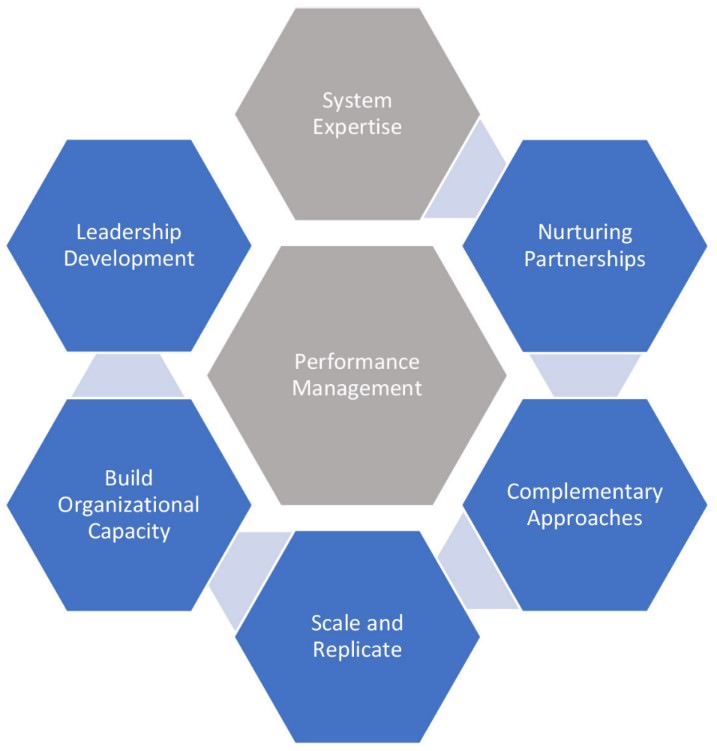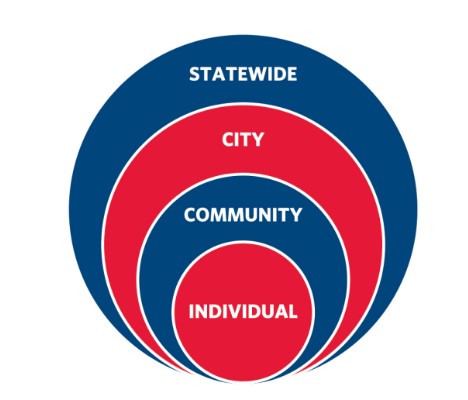Complementary Approaches: A Successful Strategy for Tackling the Complex Issue of Maternal Health
For 20 years, The Nicholson Foundation worked to advance meaningful change in safety net service
systems in New Jersey. Its grantmaking journey is described in Changing Systems, Changing Lives:
Reflecting on 20 Years.
Through stories and related text, the book showed how a small family foundation could take six guiding
themes and put them into action through grants and partner support. In the process, the Foundation
spurred real systems change that benefitted individuals, families, and communities.
A recent scholarly paper built on that work, helping to make the Foundation’s approach broadly accessible to researchers, academics, and philanthropists. “A Framework for Creating Systems Change,” by Drs. William Brown and Wynn Rosser and published in The Foundation Review, presents a new model for systems change. Five of the model’s seven components reflect themes in Changing Systems, Changing Lives. The sixth component slightly shifts the emphasis of the Foundation’s “Engaging with Government” theme, and the seventh highlights the Foundation’s overall approach by including performance measurement as a distinct and separate component of the model.
This blog is part of a series that shows how the Foundation’s work aligns with the concepts from literature and practice embodied in the components of Brown and Rosser’s model.

Using Complementary Approaches to Generate Systems Change
Brown and Rosser argue that “systems-change initiatives are ambiguous and complicated” as they seek to “solve intractable problems” and to change “deeply institutionalized features of multi-part, complex systems.” In explaining the “Complementary Approaches” component of their model, they cite literature acknowledging the need for a blended portfolio of approaches to address the structural changes, relationship changes, and cognitive changes necessary for durable change in complex social systems.
Here’s how the Foundation’s work exemplified this aspect of Brown and Rosser’s systems change model: Perhaps no goal for health and well-being is more important that ensuring that everyone has a healthy start to life. Yes, despite the fact that the United States spends more per capita on maternal health than any other industrialized nation, it has the worst maternal health outcomes.
This has been a compelling issue in New Jersey. In 2017, the state had an overall pregnancy-related
mortality ratio of 15.0 per every 100,00 births, a substantially higher rate than the national average. Black
women were about 7 times more likely to die in childbirth than were White women.
In seeking ways to develop a maternal health grant portfolio, the Foundation recognized that the racial disparities in the state’s rates of maternal and infant deaths and injuries were deeply embedded in multi-layered and intersecting inequities and that racism that played out both implicitly and explicitly across all aspects of women’s lives. Therefore, a single program or approach wouldn’t be sufficient. Multiple strategies were necessary to reach the many women who weren’t receiving concerted and culturally appropriate attention.
The result was active engagement in partnerships with many agencies and groups to carry out distinct, yet
complementary, projects operating at different levels—the state, city, community, and individual. Highlights
included:
- Supporting the First Lady’s Statewide Nurture NJ Initiative. In concert with other partners and funders, the Foundation supported and helped to develop First Lady Tammy Murphy’s Nurture NJ effort. Nurture NJ’s goal was to cut the maternal mortality rate in half and to ensure equity in care and perinatal outcomes for all mothers and infants. In other words, the goal was to fundamentally change how New Jersey organized and delivered maternal health care. Among other Nurture NJ activities, the Foundation was a primary funder of the Nurture NJ Maternal and Infant Health Strategic Plan. Released in 2021, the Plan provided the road map for Nurture NJ. To this day the Plan continues to guide the state’s maternal health programs and policies.
- Engaging City-Level Healthcare Coalitions in Efforts to Improve Maternal Health Care: The Foundation partnered with two other philanthropies (the Community Health Acceleration Partnership and the Burke Foundation) to help support Merck for Mothers Safer Childbirth Cities Initiative projects in Camden, Newark, and Trenton.

- Improving the Pregnancy, Delivery, and Postpartum Experience at the Community and Individual Level: The Foundation supported implementation of the Centering® group healthcare visit model within New Jersey’s Healthy Women Healthy Families initiative. We also funded an effort to increase the number of trained doulas in New Jersey.
Brown and Rosser conclude their discussion of complementary approaches by recognizing the reality that each approach requires sufficient capacity and expertise and that approaches necessarily result in different types of outcomes. The Foundation put this into action by intentionally creating programs with different goals and intended outcomes and it built in mechanisms and partnerships to ensure that the funded projects had the capacity to continue after Foundation funding ended.
Learn More
- Read the other blogs in this A Framework into Action series:
— Elevating Best Practices and Building Evidence: Scaling and Replicating
— Finding and Nurturing Effective Partnerships: The New Jersey Health Care Quality Institute
— Complementary Approaches
— Organizational Capacity
— Leadership Development - Read the two-part Then and Now blog describing the Foundation’s Nurture NJ work and the thriving current status of these efforts:
— Then & Now: Nurture NJ: Making New Jersey the Safest and Most Equitable Place to Have and Raise a Baby
— Then & Now: Nurture NJ was Just the Beginning - Visit the Nurture NJ website and read the Nurture NJ Strategic Plan.
- Learn about the Community Health Acceleration Partnership and the Burke Foundation.
- Read about the Merck for Mothers Safer Cities Initiative.
- Learn about the Centering Pregnancy program and the Healthy Women Healthy Families initiative.
- Read Brown W, Rosser W. A Framework for Creating Systems Change. The Foundation Review, 2023;15(4):50-6. https://doi.org/10.9707/1944-5660.1678
- Order a free copy of Changing Systems, Changing Lives: Reflecting on 20 Years. This book describes the 20-year journey of The Nicholson Foundation.

